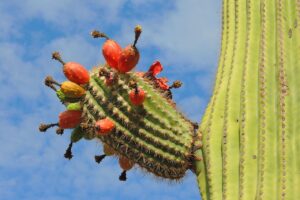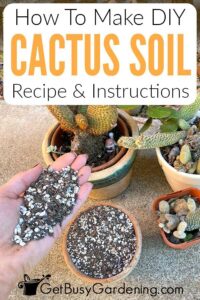Succulents in a Glass Terrarium: How to Build and Maintain One
Succulent enthusiasts and novice gardeners alike find a particular charm in crafting glass terrariums filled with these resilient plants. The intricate interplay of colors, textures, and forms in a terrarium not only offers an aesthetic delight but also presents a serene way to connect with nature. This article will guide you through the essentials of building and maintaining a succulent terrarium, addressing common concerns such as appropriate conditions, care routines, and plant selection.
Choosing Your Glass Terrarium: A Container for Your Greenery
The first step in your terrarium journey begins with selecting the right glass container. Terrariums can vary significantly in size and shape; options include traditional sealed containers, open bottles, or even jars. When choosing your container, consider the following:
**Airtight vs. Open Terrariums:** An open terrarium is suitable for succulents due to their need for good air circulation and limited humidity. This design minimizes the chances of overwatering, a common concern amongst new terrarium creators. Conversely, a sealed environment is better suited for moisture-loving plants but should be avoided for succulents.
**Size Matters:** The dimensions of the terrarium influence the ecosystem’s balance. Larger containers allow for more varied planter combinations, providing adequate space for growth. Smaller terrariums, while charming, can become crowded quickly. If using a small container, prioritize succulent varieties that won’t outgrow their confines.
**Design Aesthetics:** The visual appeal of the terrarium should not be overlooked. Choose a container that complements your home decor, whether it is a vintage jar or an elegant glass globe. Additionally, think about how the terrarium will be displayed—on a table, shelf, or hanging—before making your selection.
Creating the Perfect Environment: Layering Soil and Accessories
Once you have your glass container, it’s time to prepare the inside for your succulent assembly. The terrarium’s environment will play a pivotal role in the health of your plants.
**Setting the Foundation: Drainage Layers:** Start by pouring a layer of small pebbles or gravel at the bottom of your terrarium. This layer acts as drainage, preventing excess moisture from accumulating at the roots of your succulents. Next, add a layer of activated charcoal, which will help filter the air and eliminate odors within the closed environment.
**Choosing the Right Soil:** Select a potting mix designed specifically for succulents or cacti. Such mixes typically contain sand, perlite, or pumice, ensuring good drainage. For your terrarium, a shallow layer—about 2 to 3 inches—should suffice, depending on the size of your plants.
**Adding Decorative Elements:** While not a necessity, decorative elements such as stones, figurines, or colored sand can enhance the visual appeal of your terrarium. Arrange these elements around your future succulent plants for an intriguing layout. However, avoid adding too many decorations, as they may crowd the plants or hinder airflow.
Plant Selection: Picking the Right Succulents
Choosing the right types of succulents is crucial for the success of your terrarium. The diversity among succulent species allows you to create a unique landscape that resonates with your personal aesthetic.
**Variety and Compatibility:** Generally, opt for small to medium-sized succulents that can thrive in a terrarium environment. Some popular species include Echeveria, Haworthia, and Sedum. Be mindful of how much sunlight each plant requires, and aim for species that will maintain a similar growth habit to avoid overshadowing one another.
**Color and Texture:** Utilize different colors and textures to create visual intrigue. Pair rosette-form succulents with spiky varieties or contrasting hues to cultivate a dynamic display. Colorful blooms can also add an exciting pop, enhancing the terrarium’s overall appeal.
Caring for Your Succulent Terrarium: Tending to Your Plants
Establishing a thriving terrarium is just the beginning; regular maintenance is essential for keeping your succulents healthy. Addressing common concerns, such as watering and light exposure, will help your plants flourish.
**Watering Wisely:** Overwatering is a well-documented issue among terrarium owners. Succulents thrive in arid conditions and typically require minimal watering. Generally, a watering schedule of once every two to three weeks is adequate; however, it’s wise to check the soil between waterings. If the top inch seems dry, it’s time to hydrate your succulents. Always pour water at the base of the plants and avoid splashing the leaves, as they can decay if consistently wet.
**Optimal Light Conditions:** Light plays a critical role in succulent health. Place your terrarium in a location where it will receive bright, indirect sunlight. Too much direct sunlight can scorch the leaves, while insufficient light may stunt growth. Rotate the terrarium periodically to ensure all plants receive adequate exposure.
**Pest Management and Maintenance:** Inspect your terrarium regularly for pests like mealybugs or aphids, which can harm your plants. If detected, treat the affected areas with a cotton swab dipped in rubbing alcohol. Additionally, remove any dead leaves or debris to maintain a clean and healthy environment. Cleaning the glass occasionally helps ensure that your terrarium remains visually appealing and that your plants receive the appropriate levels of light.
Creating a succulent terrarium can be a rewarding endeavor, offering beauty and serenity to any space. By selecting the right container, layering appropriate materials, and nurturing your plants, you can cultivate a thriving ecosystem that flourishes in its glass sanctuary. With informed care and attention, your glass terrarium will be a lasting testament to your green thumb and love for succulents.





Leave a Comment